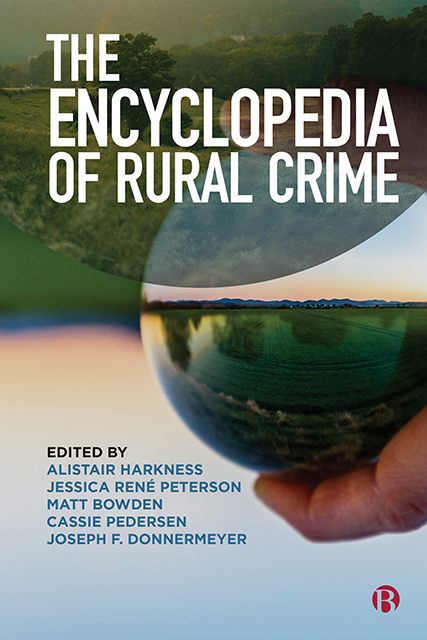Book contents
10 - Primary Socialization Theory
Published online by Cambridge University Press: 20 June 2023
Summary
Primary socialization theory attempts to explain involvement in substance use and misuse, especially amongst adolescents. It is one of three theories attempting to explain criminal behaviour that has substantial rural roots. The other two are civic community theory created by Matt Lee and colleagues, and male-peer support for violence against women led by Walter DeKeseredy and associates.
Primary socialization theory was developed during the 1990s by Eugene Oetting and colleagues who worked at the Tri-Ethnic Center for Prevention Research, Colorado State University in the United States. Their academic backgrounds were in psychology and social psychology, although their work was informed later by the sociological concept of community. The name ‘Tri-Ethnic’ derives from a focus on three important ethnic and cultural groups who live in areas outside of the cities and suburbs in the western region of the United States. These rural populations, especially in the Western United States, are Hispanic–American, Native American and White American. Even though primary socialization theory has its origins in the study of drug use amongst rural populations, it can also be applied to an urban context.
The predecessor theory to primary socialization theory developed by Oetting and associates at Colorado State University was called ‘peer cluster theory’. This theory has a basis in social learning theory whereby it attempted to model factors that either constrain or enable adolescent substance use by positing that interaction with close friends, not merely a generic form of peer culture, is the key explanatory variable. Attitudes and behaviours must be learned, and those closest to adolescents, especially peers they know well, form a reference group for what they decide to do.
Accounting first for individual-level personality characteristics such as risk-taking, it sees the learning of attitudes and the modelling of behaviours associated with either drug use or abstinence as a product of friends with whom an adolescent may associate. However, these associations are in turn affected by the strength of the bonds which adolescents possess, both within their immediate family and in the schools they attend.
- Type
- Chapter
- Information
- The Encyclopedia of Rural Crime , pp. 43 - 45Publisher: Bristol University PressPrint publication year: 2022



